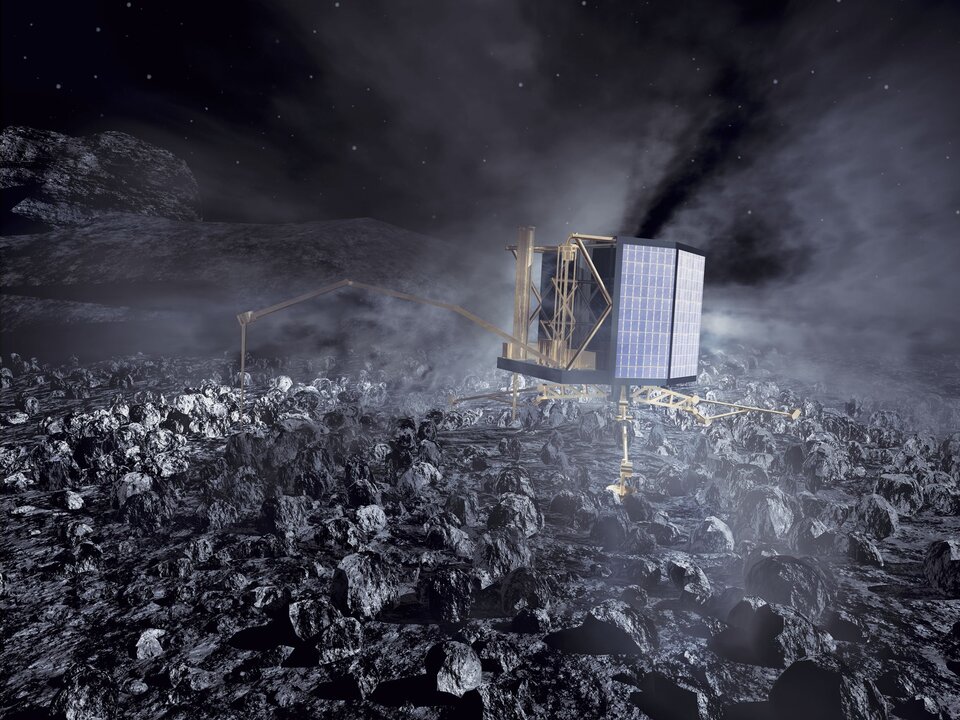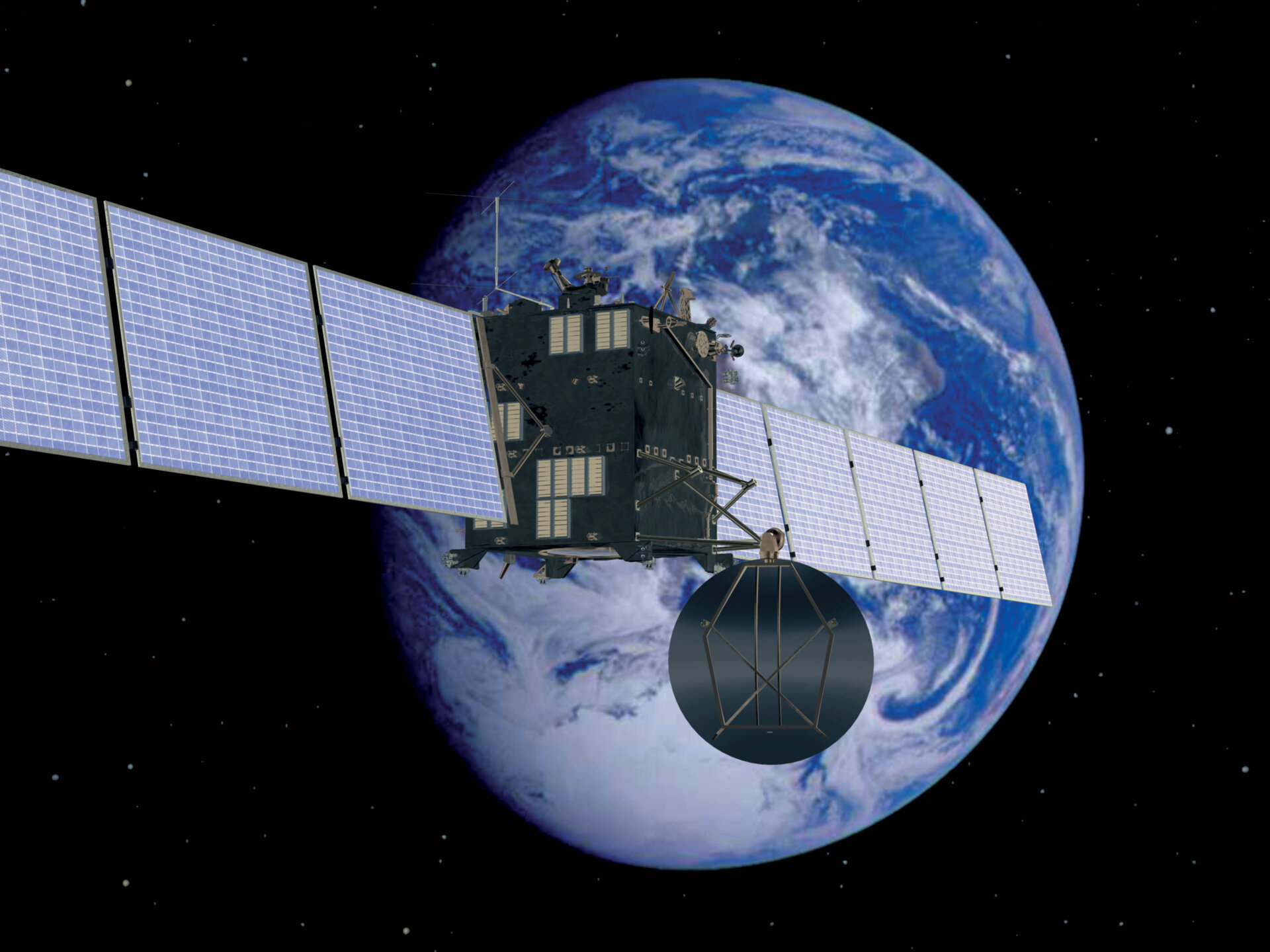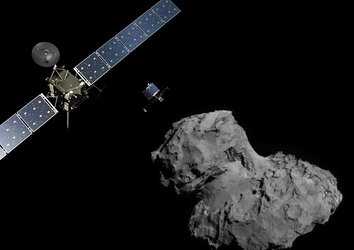Leaving home to catch a comet
ESA’s comet chaser Rosetta will soon be heading towards its new target, known as Comet 67P/Churyumov-Gerasimenko. With its launch now planned for 26 February 2004, Rosetta will be one of the most ambitious scientific missions ever launched by Europe.
One year ago, scientists around the world were eagerly awaiting the start of Rosetta’s historic mission to orbit and land on a small comet called 46P/Wirtanen. Then, following a mishap with an Ariane 5 launch vehicle, the mission was put on hold and scientists began to search for other comets that would be within Rosetta’s range.

Following an analysis of available objects, ESA decided to send Rosetta to another regular visitor to our Solar System, Comet 67P/Churyumov-Gerasimenko.
Under the revised flight plan, the spacecraft will now make one fly-by of Mars and three fly-bys of Earth on its way to the comet. This journey will also enable Rosetta to make two excursions into the main asteroid belt before its comet rendezvous.
At present, scientists are still discussing the amount of extra science that will be done during the 10-year trek to Churyumov-Gerasimenko. Some observations of Mars will be possible, and there is likely to be at least one opportunity to study an asteroid at close quarters.
A number of possible asteroids have already been identified as candidates for study, but the final selection will be made after launch, once the mission team has determined how much surplus fuel is available on the spacecraft.

However, the most exciting phase of Rosetta’s 11-year mission will come when it meets Churyumov-Gerasimenko in August 2014.
From an orbit of just a few kilometres, its cameras will be able to map the entire pockmarked surface of the icy nucleus at high resolution and search for suitable landing sites.
Once a safe landing site has been selected, the Rosetta lander will separate from the orbiter and slowly descend to the surface. If all goes according to plan, the lander will anchor itself to the icy crust and begin a detailed survey of its surroundings.
The lander will return close-up pictures of the comet’s nucleus, drill into the dark organic crust, and sample the primordial ices and gases. Meanwhile, the orbiter will continue to monitor the dramatic changes in the nucleus that take place as it approaches the Sun. Because Rosetta will escort the comet around the Sun, beyond its closest approach, we will also see the changes as it leaves the Sun.
Rosetta will provide new insights into such fundamental mysteries as the formation of Earth’s oceans and the origin of life. It may even help the human race to survive, giving us vital clues about how to respond should we ever find a comet on a collision course with the Earth.
This remarkable voyage of exploration will come to a close in December 2015, six months after the comet swings back out to the colder regions beyond Jupiter.







